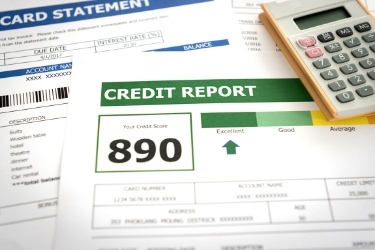
When it comes to establishing a successful business, the adage applies: To make money, you have to spend it. But what if you don’t have enough – or any – to spend? Whether you need start-up funds, a cushion, or capital to expand, knowing how to secure financing for a business is crucial.
Before doing anything else, educate yourself about the most common ways to finance a business. For entrepreneurs especially, self-funding – or bootstrapping – is sometimes a viable option. Saving up at least $5,000 is ideal, but tapping into resources like the equity of your home, your 401(k); or personal credit cards is generally too risky.

In terms of obtaining funding, there are three primary options: debt financing, equity financing, and mezzanine financing.
Debt financing means taking out a loan or line of credit – e.g., going into debt – to obtain capital. Such financing may be unsecured, but the collateral of some sort more commonly secures it; business assets like inventory and equipment are examples.
Some types of debt financing include:
With equity financing, you sell a portion of your business – an equity stake – to an investor in exchange for cash that doesn’t have to be repaid like a loan.
Some examples of equity financing options include:

A hybrid between debt financing and equity financing, mezzanine financing, refers to a loan that can be converted to an equity stake for the lender in the event of default. You usually need a proven track record, an actual product, and a history of profitability to qualify.
Loans from friends and family may be considered, but they can be risky for obvious reasons. If you go that route, proceed as if you are working with an actual lender and drive home the serious risks that are involved for them. Crowdsourcing through platforms like Kickstarter and IndieGoGo are sometimes useful for short-term funding but aren’t viable sources of long-term funding.
Identify a concise reason for wanting to obtain business financing. How much will you need, what will it be used for, how long will you need it and how soon can you repay it?
Calculate your debt service coverage ratio, or DSCR, to have an idea about how much financing you’re likely to qualify for. Divide your periodic cashflow – e.g., the amount of your monthly capital inflow – by the amount of your loan payment for the same period. Know that lenders typically need to see a DSCR of 1.35 or higher.
Get assistance from a professional CPA to do this. When creating your plan, be sure to humanize your brand, so it is more appealing to lenders.

If you’re starting a new business, make sure your credit score is good to excellent; a score of 700 or higher is optimal. If you have an established business, gather the documentation that you will need, including things like business bank statements, profit and loss statements, and business tax returns.
Even if you are very thorough, you will likely be asked to provide additional documentation after applying for financing. Make sure to provide it promptly and thoroughly.
If you are turned down, find out precisely why. Use this information to adjust your plan. Ask the lender if they can recommend other lenders that may be more willing to work with a company like yours.
This may work as a last-ditch effort, so don’t count it out.
Carefully consider the following before securing any financing:
Get Started with Obtaining Business Financing Today
The preceding merely skims the surface of the work that’s genuinely involved in obtaining business financing. If you require it, understand that the process is usually long and complicated. It helps enormously to have the right help, and E-Marketing Associates can assist you with things like business objectives reporting that can make a difference. Contact us today for more information.
The three primary options are debt financing, equity financing, and mezzanine financing. Debt involves loans or lines of credit, equity means selling an ownership stake to investors, and mezzanine blends the two, letting lenders convert the loan to equity if you default.
Start by clarifying why you need capital, what it will pay for, and how long before repayment. Use your projected costs and cash flows to set a figure, then verify it with your debt service coverage ratio and a detailed business plan.
Lenders usually look for a personal credit score of 700 or higher for startups. Established businesses can offset a lower score with strong financials, but higher ratings still improve odds, interest rates, and the amount you can borrow.
Choose equity financing when rapid growth demands more cash than your balance sheet supports or when you prefer not to add large debt payments. Be ready to share ownership and decision-making with investors who expect substantial returns within a few years.
Watch for application, origination, late payment, prepayment, guarantee, and check-processing fees, plus interest rates. Always read the fine print, calculate the total cost of capital, and compare offers before signing to avoid expensive surprises.